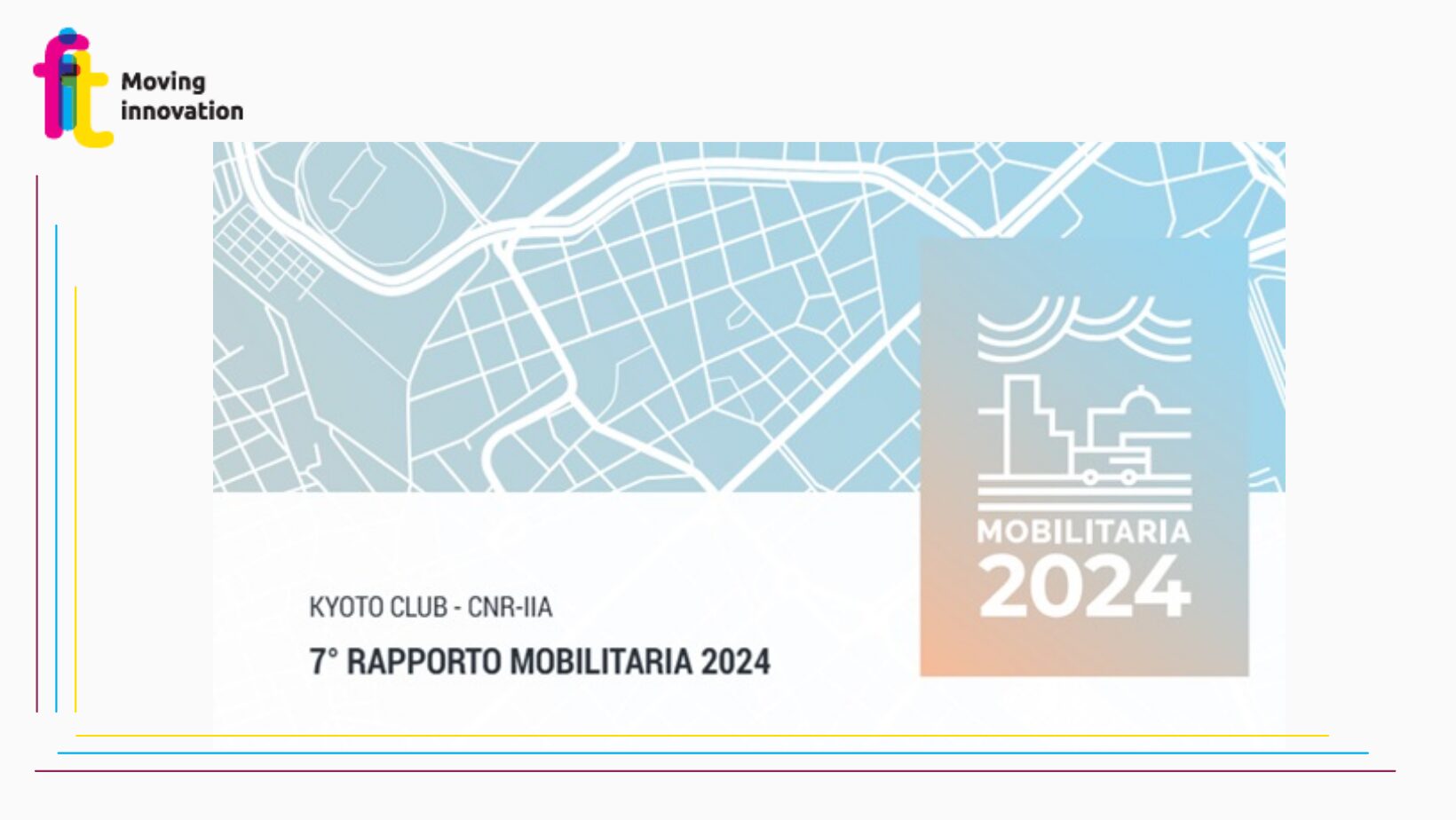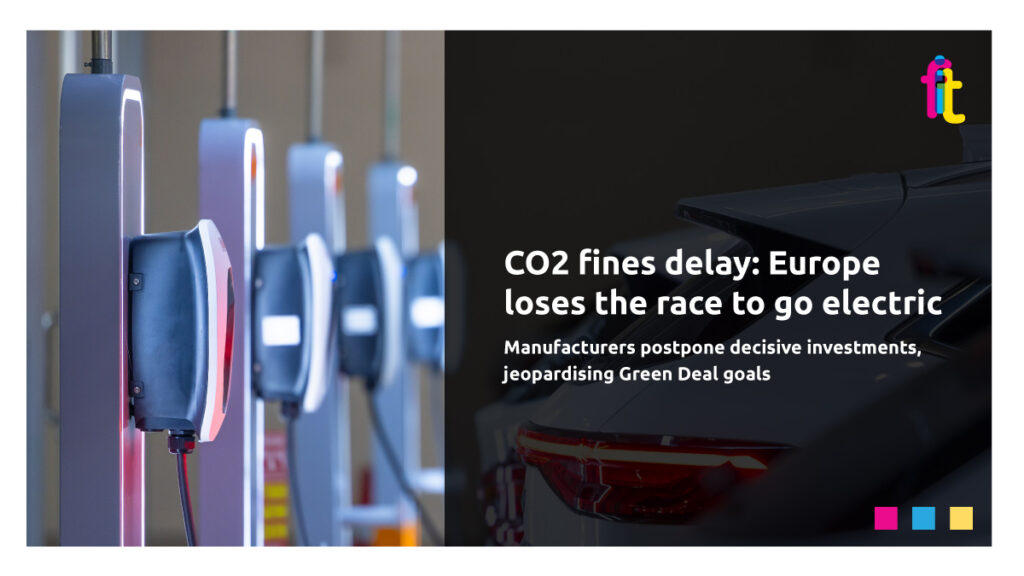Presented the MobilitAria 2024 report by Kyoto Club and CNR-IIA. On the sustainable mobility front in the lead Milan and Florence
What is the level of air quality in Italian cities? As every year, this question is answered by the MobilitAria Report 2024, presented in recent days by Kyoto Club and theInstitute of Atmospheric Pollution of the National Research Council (CNR-IIA) which analyses mobility and air quality data to 2023 in the 14 Italian metropolitan cities (Bari, Bologna, Cagliari, Catania, Firenze, Genova, Messina, Milano, Napoli, Palermo, Reggio Calabria, Roma, Torino, Venezia).
The data that emerged are positive: last year, none of the Italian cities surveyed recorded an increase in Nitrogen Dioxide (N02) values, and at the same time there was a decrease in PM10 particulate concentrations. Furthermore, with regard to PM2.5 particulate concentrations, there was a decrease in each of the cities analysed.
Urban mobility on the upswing, but Italy’s motorisation rate remains among the highest in Europe
On the other hand, as far as mobility is concerned, in 2023 in all major Italian cities a situation similar to the one before the pandemic was recorded: urban mobility has resumed, although the private car remains the main choice of Italians for urban travel, while the motorisation rate – already among the highest in the EU – has continued to increase. The latter figure in particular is a cause for concern, because in addition to the necessary targets to reduce pollution, congestion, accidents and deaths on the roads, actions to achieve decarbonisation targets are becoming increasingly urgent. These include: the adoption of low-emission zones to reduce the circulation of polluting vehicles and reduce air pollution, increasing funds for the expansion of public transport, the introduction of the City 30 to protect pedestrians and cyclists, and, finally, the amendment of the Reform of the Highway Code, already approved in March 2024.
The state of sustainable mobility in Italy
But that is not all. In the new edition of the Report, in fact, the synthetic index that measures the state of sustainable mobility in cities is updated with new data and extended to four cities (Bergamo, Padua, Parma, Prato) that together with Bologna, Florence, Milan, Rome and Turin are part of the NETZERO 2030 cities (selected by the European Commission to achieve zero climate impact by 2030), and supplemented with new indicators. This index assesses, by means of a summary value, the ‘distance’ of the 18 cities monitored by the Sustainable Urban Mobility Observatory from the goal of decarbonisation and urban liveability, by calculating for the two years in which data are available – 2020 and 2021 – the average of the values of seven dimensions: non-polluting public transport, cycle mobility, shared mobility, motorisation rate, electrification of the private vehicle fleet, health impact of air pollution, road safety. A number then emerges for each of the 18 cities that shows the distance between today’s situation and 2030, which corresponds to the ‘Synthetic Deficit gap 2020-2021 with respect to the 2030 decarbonisation and sustainable mobility target’ from which the ‘ranking’ of the Synthetic Deficit was then compiled. In this ranking we find Milan and Florence coming closest to the targets, in contrast to Reggio Calabria, which by 2021 records -104% and a serious deficit in sustainable mobility.
So what are the most popular tools for cutting emissions and improving air quality in urban areas? The answer comes from Low-Emission Zones (LEZ): a set of vehicle traffic restriction regulations that cities can adopt to ban the most polluting vehicles. The benefits resulting from the introduction of LEZs are diverse: in the report there is an in-depth study focusing on the experience of the Milan municipality, which has introduced the congestion charge with Area C for more than ten years and the LEZ Area B for the past few years. Among the benefits recorded are a reduction in diesel vehicle traffic, growth in access by electric or hybrid-electric vehicles, and finally a reduction in NOx concentrations. The change of vehicle fleet, resulting from the introduction of the Area B ZTL, has prevented around 150 [ton/anno] of NOx from traffic. This value is in line with the objectives defined in the resolution establishing the ZTL.
Kyoto Club and CNR-IIA proposals for the implementation of sustainable mobility policies
Kyoto Club and CNR-IIA are therefore launching a series of shared proposals for the implementation of sustainable mobility policies and the decarbonisation of cities.
First of all, it is asked to support the virtuous experiences of the Città 30 following the example of Bologna, the first major Italian city to experiment with a generalised 30km/h limit on urban roads, a model increasingly common among large and medium-sized European cities. Kyoto Club and CNR-IIA therefore request that the Ministry (MIT) facilitate the experimentation of the 30 cities in Italy.
Regarding road safety, on the other hand, Kyoto Club and CNR-IIA emphasise the need for more rules and the use of new technologies in order to regulate private traffic, control speed limits through speed cameras and redesign urban space.
Source: CNR/Kyoto Club






